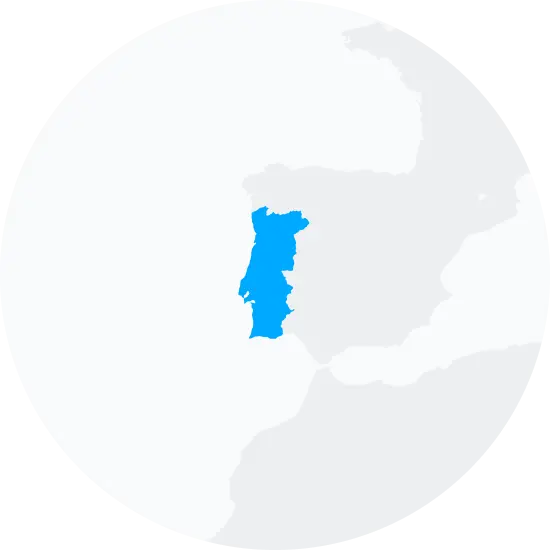Explore the Family Name De Oliveira
How common is the last name De Oliveira in the United States?
Based on the Decennial U.S. Census, the surname De Oliveira has significantly increased in popularity between 2000 and 2010. In 2000, it was ranked 12,753rd in popularity but rose to 8,139th by 2010, marking a substantial increase of 36.18 percent. The count of individuals with this surname also saw an impressive jump from 2,221 to 4,072, translating to an 83.34 percent increase. Additionally, the proportion of De Oliveiras per 100,000 people in the U.S. grew by 68.29 percent during this period.
| 2000 | 2010 | Change | |
|---|---|---|---|
| Rank | #12,753 | #8,139 | 36.18% |
| Count | 2,221 | 4,072 | 83.34% |
| Proportion per 100k | 0.82 | 1.38 | 68.29% |
Race and Ethnicity of people with the last name De Oliveira
Regarding ethnicity, the Decennial U.S. Census data reveals some shifts in the ethnic identity associated with the De Oliveira surname from 2000 to 2010. White individuals accounted for the majority, increasing from 71.27 percent in 2000 to 83.45 percent in 2010. Notably, the percentage of Black individuals with this surname surged by 178.74 percent over the decade, although they still make up a relatively small portion of De Oliveiras at 5.77 percent. The percentage of those identifying as Hispanic decreased slightly, while a marginal increase was observed among Asian/Pacific Islanders and American Indian and Alaskan Natives. Those identifying with two or more races saw a considerable decrease from 16.07 percent to just 1.45 percent.
| 2000 | 2010 | Change | |
|---|---|---|---|
| White | 71.27% | 83.45% | 17.09% |
| Hispanic | 10.18% | 7.42% | -27.11% |
| Black | 2.07% | 5.77% | 178.74% |
| Two or More Races | 16.07% | 1.45% | -90.98% |
| Asian/Pacific Islander | 0% | 1.3% | 0% |
| American Indian and Alaskan Native | 0% | 0.61% | 0% |
De Oliveira ancestry composition
23andMe computes an ancestry breakdown for each customer. People may have ancestry from just one population or they may have ancestry from several populations. The most commonly-observed ancestry found in people with the surname De Oliveira is Spanish & Portuguese, which comprises 65.7% of all ancestry found in people with the surname. The next two most common ancestries are Indigenous American (6.0%) and Italian (4.6%). Additional ancestries include Angolan & Congolese, French & German, British & Irish, Nigerian, and Eastern European.
Ready to learn more about your ancestry? Get the most comprehensive ancestry breakdown on the market by taking our DNA test. Shop 23andMe
| ANCESTRY BREAKDOWN | COMPOSITION |
|---|---|
| Spanish & Portuguese | 65.7% |
| Indigenous American | 6.0% |
| Italian | 4.6% |
| Other | 23.7% |

Possible origins of the surname De Oliveira
Your DNA provides clues about where your recent ancestors may have lived. Having many distant relatives in the same location suggests that you may all share common ancestry there. Locations with many distant relatives can also be places where people have migrated recently, such as large cities. If a large number of individuals who share your surname have distant relatives in a specific area, it could indicate a connection between your surname and that location, stemming from either recent ancestral ties or migration.
Based on 23andMe data, people with last name De Oliveira have recent ancestry locations in Portugal and Brazil.
| RECENT ANCESTRY Location | Percentage |
|---|---|
| Madeira, Portugal | 88.50% |
| Azores, Portugal | 88.50% |
| Aveiro District, Portugal | 86.30% |
| Porto District, Portugal | 85.50% |
| Lisbon, Portugal | 82.40% |
What De Oliveira haplogroups can tell you
Haplogroups are genetic population groups that share a common ancestor on either your paternal or maternal line. These paternal and maternal haplogroups shed light on your genetic ancestry and help tell the story of your family.
The top paternal haplogroup of people with the surname De Oliveira is R-P311, which is predominantly found among people with European ancestry. Haplogroup R-P311 is descended from haplogroup R-M343. Other common haplogroups include R-Z225 and E-M5021, which are predominantly found among people with European and European ancestry. Other surnames with similar common haplogroups are: Dutra, Moniz, Estevez, De Souza, Iglesias, Figueiredo, Viera, Nogueira, Moreira.
The most common maternal haplogroups of people with De Oliveira surname are: B2, H, A2. These most commonly trace back to individuals of European ancestry.
 Paternal Haplogroup Origins R-M343
Paternal Haplogroup Origins R-M343Your maternal lineage may be linked to the Ancestral Puebloans
Haplogroup B appears to have been a fixture in the Southwest at least since the introduction of agriculture to the region from Mesoamerica 2,500 to 3,500 years ago. In some areas the haplogroup is found in 100% of the Native American population and sometimes multiple populations share the exact same branch of B, as is the case for the Navajo, Zuni, Jemez and Seri groups.Haplogroup B reaches levels of 75-90% among the Pueblo groups of New Mexico and Arizona, which are thought to descend from the cliff-dwelling Ancestral Puebloans who occupied the Southwest from the 8th century AD until their sudden disappearance in the early 12th century. The Ancestral Puebloans didn't literally disappear; modern Pueblo people and most scholars believe warfare or environmental catastrophe forced them to abandon their elaborate cliff dwellings for settlements in the Rio Grande valley. Recent studies of DNA extracted from 2,000-year-old remains have supported that view by establishing the presence of haplogroup B among the Ancestral Puebloans.

What do people with the surname De Oliveira have in common?
Spoiler alert: it's complicated. People with the same last name are usually no more genetically similar than a randomly sampled group of people from the same population. That said, people with the same surname are more likely to have similar ancestries than randomly sampled individuals. The reason is the tendency of people with similar cultural or geographical backgrounds to preferentially mate with one another. That's why people who share a surname may be more likely to share traits and tendencies in common than people within the general population. Check out the percentages below to see the prevalences of tastes, habits, and traits of people with your surname compared with prevalences among 23andMe users.
Preferences
Traits
Habits
Wellness

Migraine
A severe headache characterized by intense pain, sensitivity to light and sound, and often accompanied by nausea and vomiting.
"De Oliveira" Surname 6.6%
23andMe Users 16.4%
Are health conditions linked to the last name De Oliveira?
The short answer is that, if there is an association between surname and health, it's usually more about your ancestry than your name. Individuals with a given surname are no more genetically similar than the general population but often have similar ancestries. The populations of people associated with those shared ancestries often have sets of genetic variations, also known as alleles, in common. Some of those alleles are associated with a greater likelihood of developing certain diseases.
Disease variant frequency by ancestry
Disease allele frequencies in populations associated with the surname De Oliveira are shown below. Important Note: not everyone with a disease allele will develop these health condition










